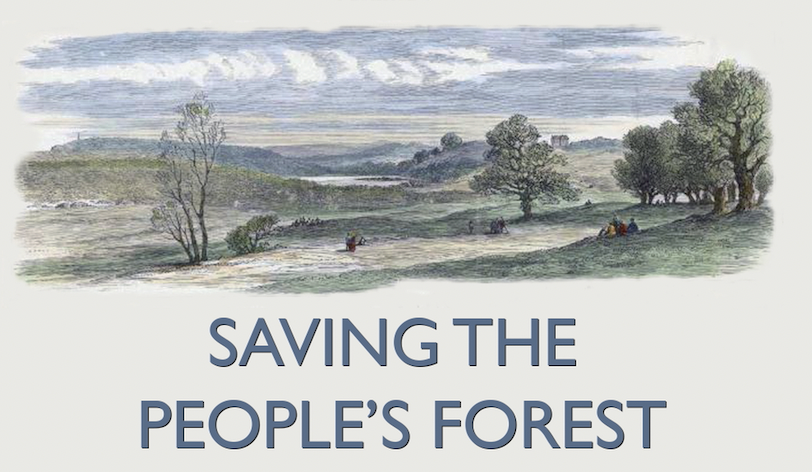Post
BOOK REVIEW | Saving the People's Forest - Open spaces, enclosure and popular protest in mid-Victorian London
18 Dec 2023
By Mark Gorman
Reviewed by Liz Gwinnell
There are no statues or monuments erected to the memory of the men and women who campaigned to save Epping Forest, the ancient hunting ground crouching at the eastern edges of our capital city.
Saving the People’s Forest is a book which tells the story of how, without the efforts and determination of a group of ordinary men and women in the 19th century; Epping Forest would be something only remembered in old maps and history books.
Get priority booking on events - join The London Society
In many ways, their campaign echoes the spirit of modern-day movements, suggesting that although London is now vastly different from the London they knew, the passion to preserve nature binds us back to our 19th century forebears. In the introductory chapter, Oliver Rackham is quoted as suggesting that the origins of the modern-day conservation movement can be traced back to the campaign to save Epping Forest.
Saving the People’s Forest is part of a series exploring local and regional history. It is a textbook rather than a book to pick up and read at random, but it is laudable in its purpose: to record a little known aspect of London history.
Several factors spurred campaigners into action to save the forest. Landowners were determined to enclose open spaces, including the London Commons of Plumstead, Wandsworth and Hackney Downs and open green spaces were being swallowed up by the rapid expansion of London towards the East. In just 80 years between 1800 and 1881, the population of the capital city grew from around 1 million to 4.5 million, fuelling the demand for housing.
At the time, the impoverished East End had very few open green spaces compared to the West End. Housing development was rapidly swallowing up swathes of common land including the gardens, courtyards and allotments of everyday tenants and householders. Until the mid-nineteenth century, southwest Essex was almost entirely rural and Epping Forest was isolated and remote but with the advent of the railway, the landscape was changing rapidly, and for the first time Epping Forest became accessible from London. Hainault Forest was an early casualty of this expansion and its loss spurred tradesmen, merchants and men and women from all walks of life into taking action to save Epping Forest from a similar fate.
Saving the People’s Forest invites the reader to return to a London which was vastly different from the city it is today when the inhabitants of Bethnal Green kept rabbit hutches and pigeon lofts in their backyards and grew flowers wherever they could; a time when watercress harvesters still lived in Shoreditch. The countryside remained a constant presence in the lives of East Londoners and one which they were determined not to lose altogether. How different London might have been without the passions and determination of these people. And how wonderful that due to the efforts of the author Mark Gorman, their story has been preserved.
